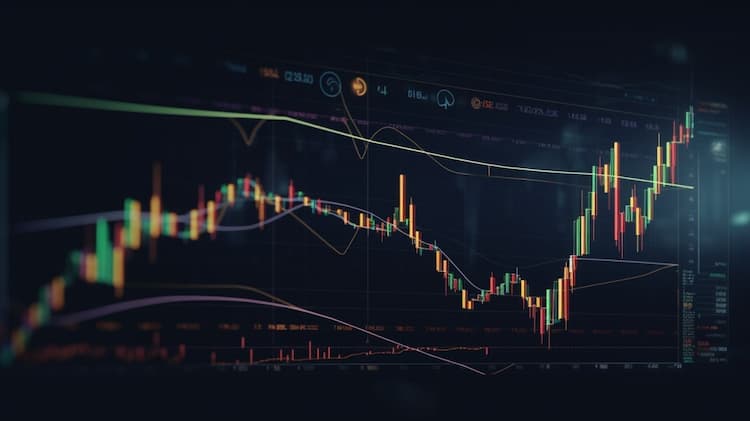
How does the GMOM ETF work?
The GMOM ETF is a specialized investment fund that focuses on a specific sector. This exchange-traded fund offers investors exposure to a range of companies in this sector.
The Renaissance IPO ETF is managed by Renaissance Capital Greenwich Funds, and it is designed to track the performance of the Renaissance IPO Index, which is curated by the IPO experts at Renaissance Capital LLC. This ETF focuses on investing in U.S.-listed companies that have recently gone public through an initial public offering (IPO). The Renaissance IPO Index aims to capture approximately 80% of the total market capitalization generated by new public companies, ensuring a comprehensive representation of the IPO market. To maintain its focus on recent IPOs, the Index is rebalanced quarterly, adding new IPOs and excluding firms that have been public for over three years. While the fund predominantly invests in the equities included in the Renaissance IPO Index, it may also engage in futures, options, swaps, and other financial derivatives to effectively mirror the Index's returns. By investing in the Renaissance IPO ETF, shareholders gain access to a portfolio of the market's newest public companies, encapsulating the innovation and growth potential inherent in the IPO sector.
While the primary objective of the IPO Dividend ETF is to replicate the price and yield performance of the Index, it's important to note that this ETF doesn't focus on dividend distributions. The ETF tracks a portfolio of companies that have recently completed initial public offerings (IPOs) and are listed on U.S. exchanges. Dividend distributions within this ETF, if any, are subject to the dividend policies of the individual constituent companies, which can vary widely. Investors considering this ETF should be aware that the emphasis here is on capturing the performance of newly public companies rather than generating regular dividend income.
Tracking the performance of companies that have recently completed an initial public offering (IPO) is the primary objective of the IPO Tracking ETF. This fund aims to replicate, before fees and expenses, the price and yield performance of the IPOX 100 U.S. Index. The index consists of newly public companies listed on U.S. exchanges, with a focus on capturing approximately 80% of the total market capitalization of these recent IPOs. It employs a transparent and rules-based methodology, with constituents weighted by free float-adjusted market capitalization and individual weights capped at 10%. The IPO Tracking ETF seeks to provide investors with exposure to this unique segment of the equity market, making it a valuable option for those interested in IPO-related investments.
The correlation aspect of the IPO ETF plays a pivotal role in understanding its behavior in relation to the broader IPO market. This ETF seeks to replicate the performance of companies that have recently completed an initial public offering (IPO) and are listed on a U.S. exchange. As such, its correlation with the IPO market is expected to be strong. Investors often analyze IPO Correlation's correlation with other assets and sectors to make informed decisions and gain insights into the performance of newly public companies. If you're interested in studying these correlations, ETF Insider offers a powerful web app with a simple visualization tool to provide in-depth and interesting data on various US ETFs, including IPO Correlation, allowing you to identify overlaps and investment opportunities effectively.
The IPO ETF seeks to replicate the price and yield performance of the Index, designed by IPO research firm Renaissance Capital LLC. This index consists of companies that have recently completed an initial public offering (IPO) and are listed on a U.S. exchange. IPOs represent a category of unseasoned equities, underrepresented in core equity indices, making this ETF an excellent choice for investors looking to tap into the potential growth of newly public companies. The index is concentrated in sectors such as information technology and consumer discretionary, offering investors exposure to these dynamic industries while maintaining a focus on IPOs. However, it's important to note that the fund's concentration in IPOs can result in a higher risk profile compared to more diversified ETFs.
The IPO ETF seeks to replicate the performance of the IPOX® Index, designed by Renaissance Capital LLC. This ETF provides investors with exposure to recently public companies listed on U.S. exchanges, a category often underrepresented in core equity indices. By tracking approximately 80% of the total market capitalization of newly public companies and regularly rebalancing to include new IPOs while removing companies that have been public for three years, this ETF captures the unique growth potential of IPOs. Its portfolio includes a mix of common stocks, depositary receipts, real estate investment trusts (REITs), and partnership units, with a notable presence in the information technology and consumer discretionary sectors. For a comprehensive understanding of this ETF's exposure and its correlation with the IPOX® Index, ETF Insider offers a web app with deep data visualization, helping investors identify overlap and correlations, making it a valuable tool for ETF analysis.

ETF Insider is a data-driven portfolio analytics and optimization platform that introduces a more efficient and practical way to visualize, analyze and optimize portfolios.
Rather than focusing on the surface-level attributes of ETFs and Mutual Funds, ETF Insider goes deeper by examining the underlying holdings of exchange traded products.
By organizing and structuring that data, investors can easily navigate within their overlapping layers.
This innovative perspective combined with modern data visualization and modeling tools, provides an entirely new approach to portfolio optimization that can quickly expose both portfolio inefficiencies and opportunities.

The GMOM ETF is a specialized investment fund that focuses on a specific sector. This exchange-traded fund offers investors exposure to a range of companies in this sector.

Compare the IYF and QABA ETFs with our thorough analysis. Dive into the performance metrics, underlying assets, and investment strategies to see how they stack up against each other. Whether you're a seasoned investor or just getting started, our comparison provides valuable insights to guide your investment decisions.

The CLDS ETF (Cloud Computing and Data Security) is an innovative exchange-traded fund that focuses on companies at the forefront of the cloud computing and data security industries. This ETF offers investors exposure to leading cloud service providers and cybersecurity firms, capitalizing on the growing demand for cloud-based technologies and robust data protection solutions. Discover how the CLDS ETF is reshaping investment strategies and positioning portfolios to benefit from the rapid expansion of the digital economy and the need for secure data management.
ETF Insider is a novel portfolio optimization tool that uses the power of data visualization to gain insight into portfolio compositions, concentration risks, portfolio efficiency and more. Complex financial data can be transformed into visually appealing and easily digestible graphs and charts, allowing investors to quickly identify trends and make well-informed investment decisions. Not only does this save time, but it also increases the accuracy and effectiveness of portfolio management.